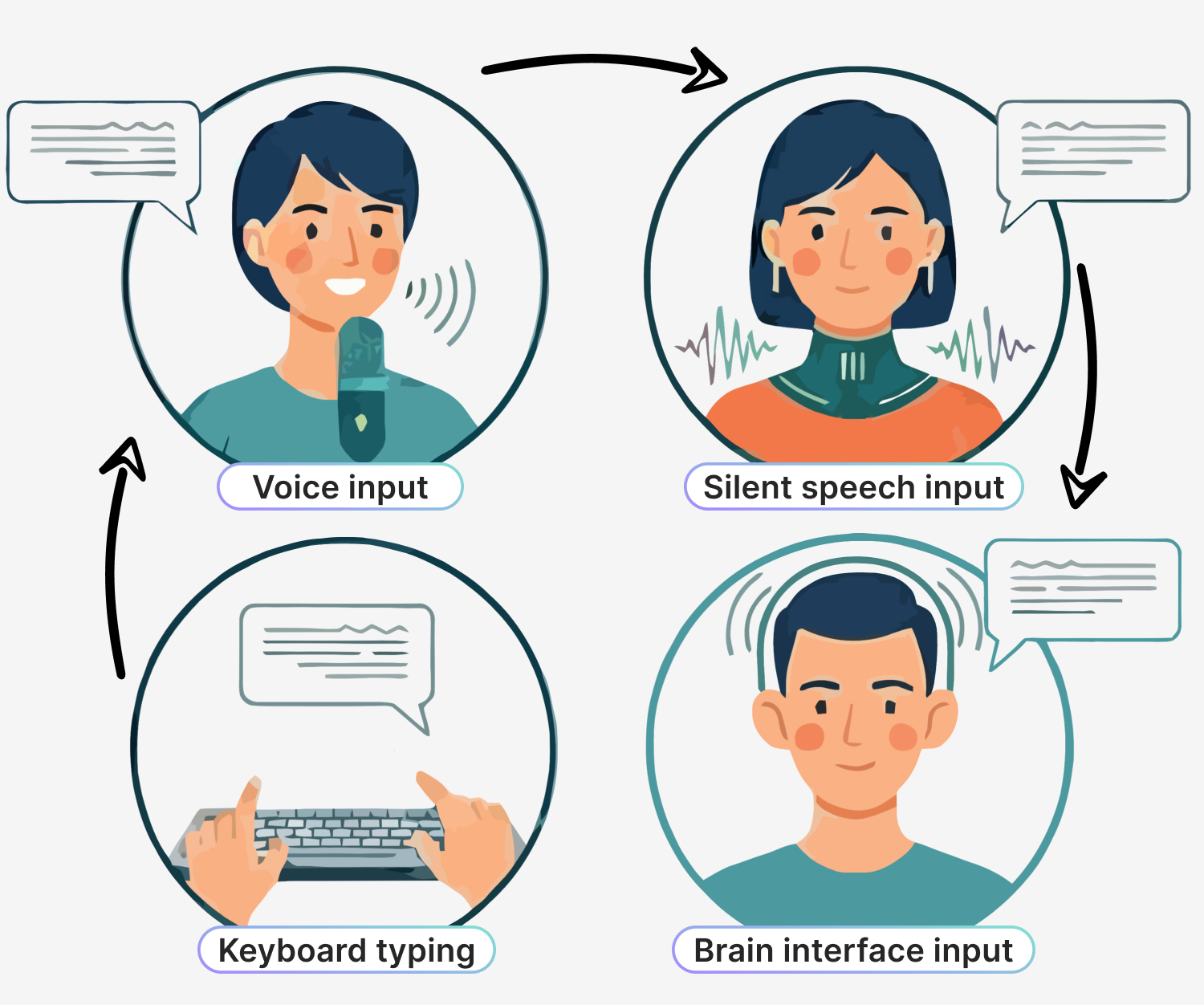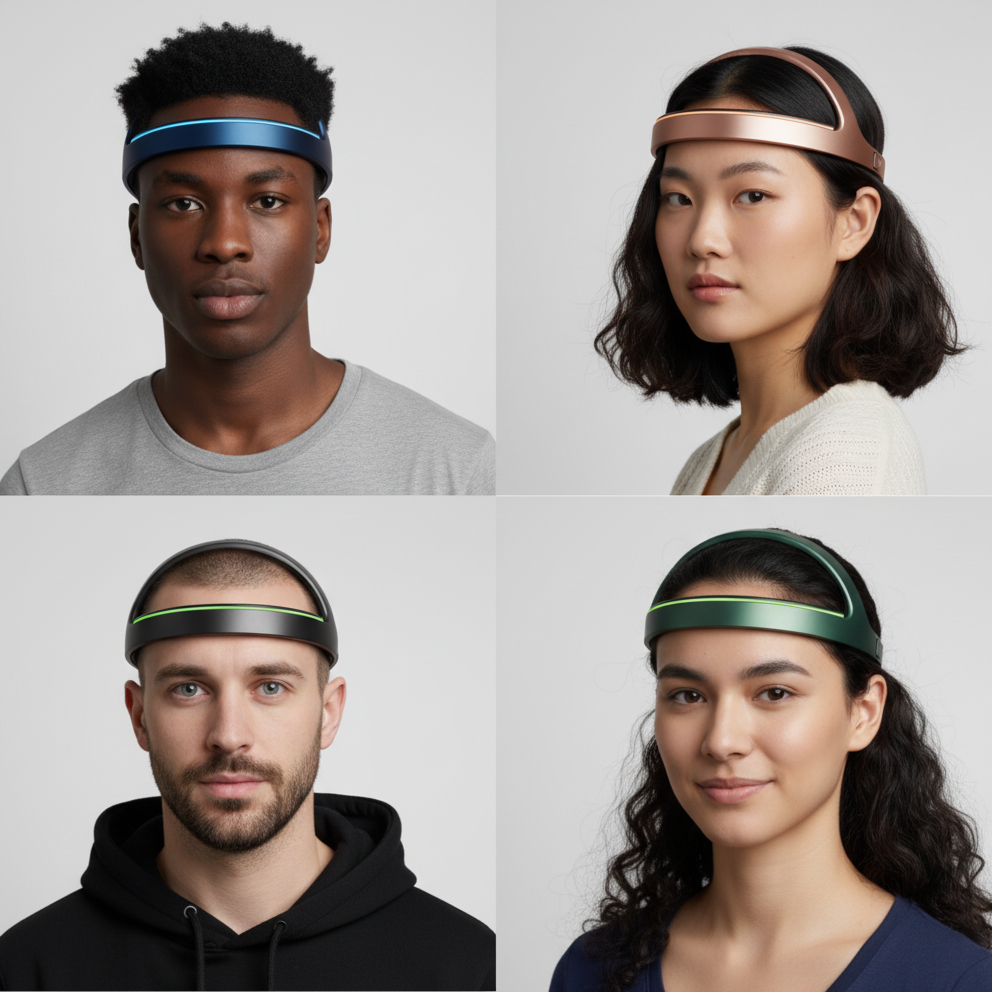STAGE 2: Silent Voice - Silent Input
What it is
Silent Voice is a soundless input technology. Person speaks, but makes no sound. You articulate words physically, but vocal cords don't activate - no sound comes out. Neck muscles work, sensors catch their impulses, AI recognizes speech and converts to text. Completely silent.
Voice Input problem
Voice Input solved the speed problem but created a new one - privacy. When you speak aloud, everyone hears. Office, public places, transport - your words are public everywhere. Speaking quietly damages your voice. Silent Voice solves this - no one hears, you don't strain your vocal cords.
Where it's critically important
Privacy (the largest audience)
Office - colleagues hear your messages. Cafe - neighbors know what you're writing. University, lecture - you can't make noise. Silent Voice makes text input private.
Military operations
Covert operations require absolute silence. Communication between soldiers without sound is critical for survival. Silent Voice solves this task.
Noisy places
Manufacturing, construction, rescue operations - voice can't be heard due to surrounding noise. Wind, machinery, sirens drown out speech.
People with voice impairments
Those who can't speak aloud due to aphonia, dysphonia, laryngitis, vocal cord damage, but neck muscle system is preserved. Silent Voice gives them ability to communicate.
Technology exists
Silent Voice technology isn't science fiction - developments already exist in scientific research. They're based on dry sensors and magnetic sensors that capture electrical impulses from neck muscles during silent articulation. Technically reproducible, but there's a nuance: currently these are only laboratory prototypes and scientific papers, not a ready commercial solution.
Why no finished product? Because simply collecting signals from sensors isn't enough. These signals need processing by AI models that match muscle impulses with specific words and phrases. This is a complex neural network training task, but it's solvable - the technology exists, needs implementation.
Based on existing research, we can create a working prototype. This prototype is needed to prove the technology really works on a living person. Only this way can we attract serious investment.
What it will look like
What's needed for prototype → Support the Project
To create the first working prototype, approximately €10,000 is needed. Help us reach our funding goal and accelerate Silent Voice development.
Support the Project
€4,500
EMG system (complete hardware to capture silent speech signals)
€200
Magnetometer system (tracks movement for improved accuracy)
€2,100
ML laptop (for AI model training)
€900
Software & AI tools (Claude Pro, ChatGPT, Midjourney, etc.)
€1,300
Reserve (unexpected costs)
Status: Requires €10,000 funding to create prototype. Technology exists, resources needed for implementation.










